#paleolithic art
Text
look at the great bison
2K notes
·
View notes
Text
On This Day In History
September 12th, 1940: Cave paintings are discovered in Lascaux, France, by a dog named Robot.

A megaloceros, a now-extinct genus of deer, over a line of black dots.
454 notes
·
View notes
Text

Figurine depicting swimming reindeer carved from mammoth ivory, uncovered near Montastruc, France, circa 11,000 BC
from The British Museum
209 notes
·
View notes
Text
currently crying over ancient humans and how the drive to create art and tell stories is literally ingrained into our DNA. how our species loves so deeply and mourns our dead so tenderly that we laid them to rest in beds of wildflowers, curled up like they were going to sleep for the final time. How children, when walking in mud and sand would tamp down their footprints and look at the marks they left. That in caves, small hands are on the ceiling because a loved one lifted the child up to decorate their home like we lift little kids up to decorate a Christmas tree or their bedroom walls. the fact that art was one of the first things to be created for our own enjoyment fills me with a feeling I don’t know how to describe. If I wasn’t going into illustration, I’d be an archeologist because I can think of nothing more amazing than uncovering the threads that weave the timeline of humanity together. I will never know these ancient humans and it makes my heart ache. The fact that we, hundreds of thousands of years in the future, are able to look back and see ourselves in those who never could have imagined what today is like is the coolest feeling ever.
#having a normal one#archeology#ancient humans#ancient history#paleolithic art#the creative spirit endures under every circumstance#and I think that it’s the most beautiful trait the human species has
840 notes
·
View notes
Text

Trampt Toys
53 notes
·
View notes
Text
“Carbon-Based Paleolithic Paintings Found in France” via Archeology Magazine
https://www.archaeology.org/news/12020-231227-france-paleolithic-paintings
“The newly identified drawings depict horses, deer, and bison.”
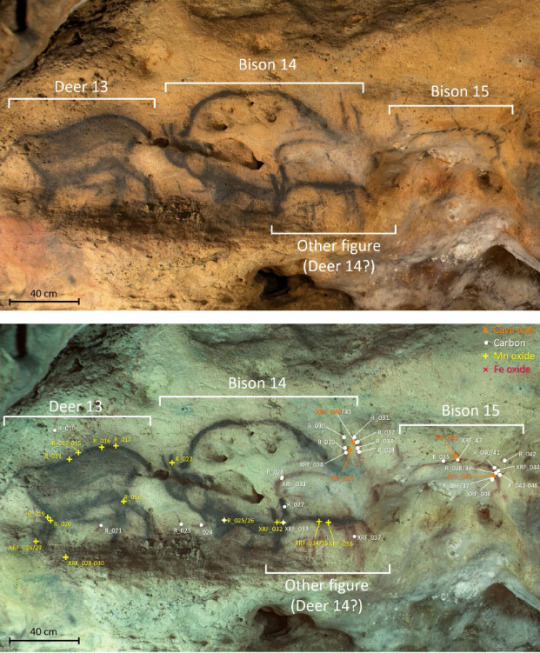
#animals in art#prehistoric art#Archeology Magazine#archeology#cave art#cave painting#Paleolithic art#European art#article link
20 notes
·
View notes
Text


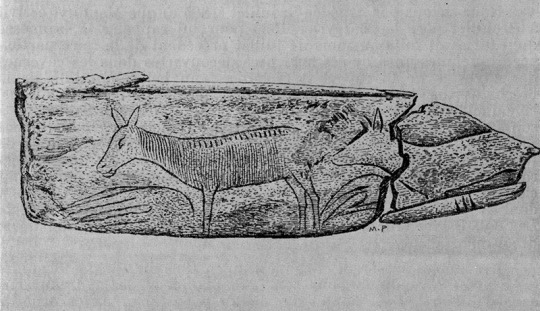


Prosper Mérimée – Scientist of the Day
Prosper Mérimée, a French writer, government official, and defender of France's architectural heritage, was born Sep. 28, 1803.
read more...
#Prosper Merimee#antiquities#prehistoric art#paleolithic art#histsci#histSTM#19th century#history of science#Ashworth#Scientist of the Day
36 notes
·
View notes
Text
The oldest piece of artwork ever found in Britain dates back to the end of the Ice Age. Known as the Cresswell horsehead, it’s a fascinating look into art’s evolution.
20 notes
·
View notes
Text

A Gust of Wind Vol.3, 8.20.23
“Cradle of Man"
i.
Were new stones used to carve
Lasting reminders on the cave walls?
Not mammoth slaying spears of legend
Nor tribe-conquering cudgels
Was blood the first hue?
At the cue for color
What woman first took to the hard walled world
With four deft strokes a man appears
Arms outstretched
In joy? Crying out as a babe?
In the thigh-pressed cradle of man
Such a mirror of joy
Seen in the fleshy gates to life
Long before any pearly gates appeared
Swirly gates in the ocean steered
What hands took to the world and scrawled,
“I was here”
In a time before words
Before divine embarrassment
Primordial ordeals
Before man, a woman
Before woman, time and rock and dust
Pulled and wove and carved and cured
To make the cradle of man
Safe at the center
ii.
A sun
A son
A whole system of life revolving
Evolving
People passing and whirling, surrounding
Any soul can say where they’re from
Leave a hand print on a wall
Carve an effigy
For all the world to see
Embracing your home
Reach towards the skies
Scrawl out the shadow
Of the mud of the clay
What a force of joy to see in the world
A reflection of life
“You are here”
“You were here”
Locked eyes across millennium
In the dawn, with a stone
Looked at you and saw within
The malleable world,
Stone and mallet in hand
Themselves at your root
In life’s first cradle
@env0writes C.Buck
Ko-Fi & Venmo: @Zenv0
Support Your Local Artist!
Photo by @mynamemeanscloud
#writeblrcafe#poeticstories#poetryportal#twc#spilled ink#fabledanarchy2#inspired by#wutispotlight#writtenconsiderations#alt lit#REPOST CAUSE IT GOT FLAGGED#poetselixir#poetswhisper#burningmuse#august of words#a gust of words#a gust of wind#a gust of words vol.3#humanity#paleolithic art#env0 writes#twcpoetry#writerscreed#abstractcommunity#savage words#smittenbypoetry#poetscreed
14 notes
·
View notes
Text
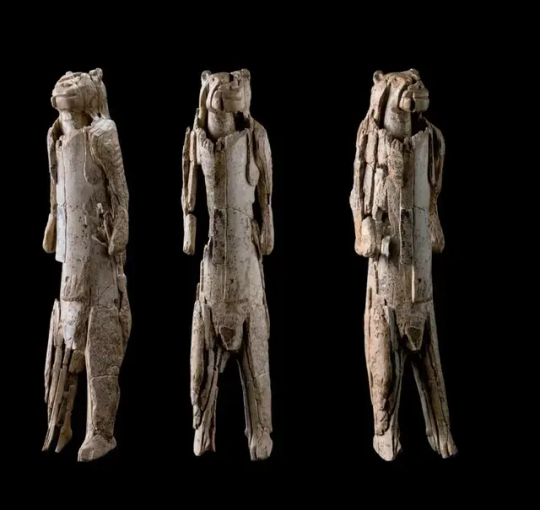
El Hombre-León de la cueva de Hohlenstein-Stadel
The Lion Man from the Hohlenstein-Stadel cave
(Español / English)
NO ES EL REY LEÓN, PERO...
Os presentamos una de las maravillas más antiguas del arte mueble paleolítico: el Hombre-León de la cueva de Hohlenstein-Stadel, en Alemania.
Hace unos 32.000 años alguien talló delicadamente esta figura de casi 30 cm de altura tallada en un colmillo de mamut. Representa a un ser híbrido entre humano y león, habiendo quienes consideran que era un chamán con un tocado de cabeza de león o quienes sostienen que era una divinidad, o un simple adorno, o un objeto apotropáico o... Como ocurre con las Venus o el propio arte rupestre, caben muchas interpretaciones. En el brazo muestra 7 misteriosas marcas, como de garras, que tampoco ayudan a desentrañarlo.
Pero más allá de la belleza de esta figurita, la traemos porque es un titánico ejemplo de reconstrucción. Su descubridor, Robert Wetzel, recogió en 1939 más de dos centenares de fragmentos de marfil de mamut en las excavaciones de la cueva, intuyendo que podía tratarse de algo importante. Nunca tuvo oportunidad de trabajar con ellos porque inmediatamente después del descubrimiento fue llamado a filas. Estallaba la II Guerra Mundial.
Así que nuestra figurita permaneció en un cajón repartida en 200 pequeños pedazos durante más de 30 años. Su restauración, tal como lo veis en la imagen, duró 40 años más.
Fuente: ArqueoEduca
The Lion Man from the Hohlenstein-Stadel cave
IT'S NOT THE LION KING, BUT…
We present to you one of the oldest marvels of Palaeolithic furniture art: the Lion Man from the Hohlenstein-Stadel cave in Germany.
About 32,000 years ago, someone delicately carved this nearly 30 cm high figure from a mammoth tusk. It depicts a hybrid being between a human and a lion, with some believing it was a shaman with a lion's headdress, others claiming it was a divinity, or a simple ornament, or an apotropaic object, or…. As with the Venus or cave art itself, there are many interpretations. On the arm it shows 7 mysterious claw-like marks, which do not help to unravel it either.
But beyond the beauty of this figurine, we bring it to you because it is a titanic example of reconstruction. Its discoverer, Robert Wetzel, collected in 1939 more than two hundred fragments of mammoth ivory in the excavations of the cave, sensing that it could be something important. He never had the chance to work with them because immediately after the discovery he was drafted into the army. World War II was breaking out.
So our figurine remained in a drawer in 200 small pieces for more than 30 years. Its restoration, as you see it in the picture, took another 40 years.
2 notes
·
View notes
Photo
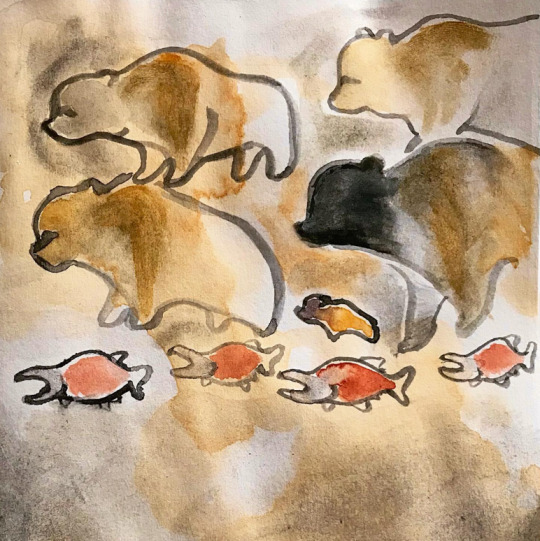

Experimenting with palaeolithic art in my sketchbook, I really love how line and shape are used by these old artists.
#art#my art#my art i guess#sketchbook#sketchbook art#palaeolithic art#paleolithic art#cave art#cave paintings#bears#horses#traditional art#graphite art#watercolours#watercolors#watercolour art#sketching#sketch#bear#horse#salmon#animal art#animal artwork
22 notes
·
View notes
Text
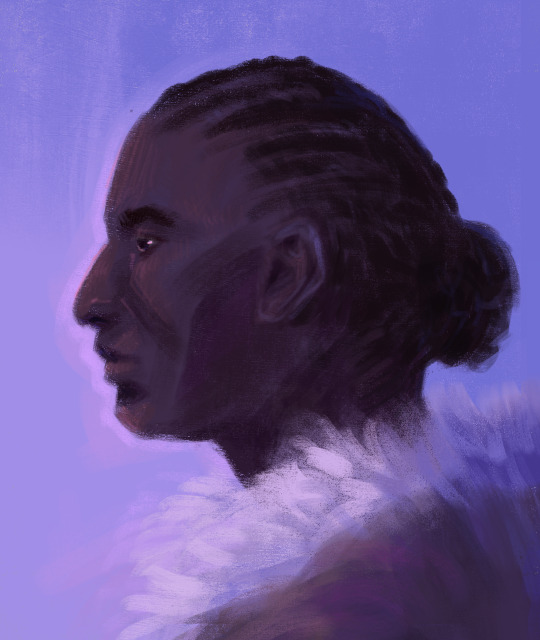
quick + loose OC portrait
Time taken: 48 minutes
#Oc art#original character art#Oc artwork#original character artwork#My art#painting#portrait#Oc painting#oc portrait#Paleolithic art#Aurignacian#prehistoric oc#Prehistoric art#gravettian
17 notes
·
View notes
Text
the other day i was making pasta with my little niblings and one of the dough strips had a rounded out part and one of the kids said wow! thats a butt! which is hilarious and i love them and all i could think about were these pieces of art



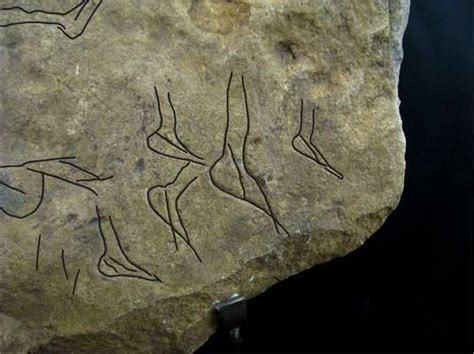
8 notes
·
View notes
Text

Venus de Willendorf o Venus Paleolítica
#Venus of Willendorf#venus#venus paleolítica#paleolithic#paleolithic art#paleolithic venus#stone age#history#prehistoric#ancient history#paleolithic idol#isn't she cute?
10 notes
·
View notes
Text
You know what fuck it-
CAVE PEOPLE!!!-
WE NEED MORE PALEOLITHIC ART, STUDIES, FACTS- OC’S EVEN?!- WE NEED MORE OF IT!!!
THERE IS SO MUCH CHARACTER POTENTIAL TO MAKE WITH THE HISTORY OF CAVE PEOPLE AND HOW MUCH EMOTION CAN BE SHOWN NOT WORH WORDS- BUT YOUR ACTIONS!!
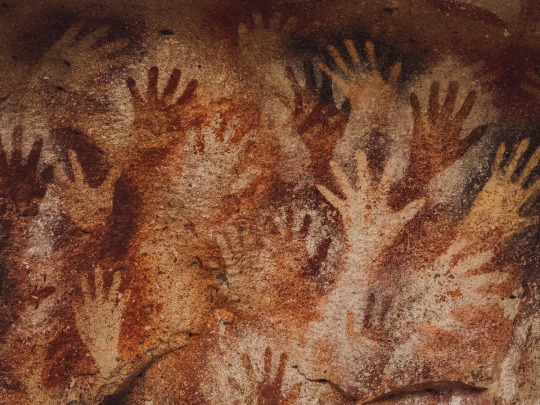
Thank you for stopping by my hyperfication rant


#paleolithic#paleolithicperiod#cavemen#caveman#cavefolk#cavefolkoc’s#cavemenoc’s#paleolithic art#WENEEDMORECAVEMEN!!!#im hyperfixating again
7 notes
·
View notes
Text
hELP I'm getting emotional about the Paleolithic era again
#hobbit talks#andy rambles#listen listen#the thing about the paintings is the humanity in the animals because of the natural curve of the rock and the intention of it all#were they painting a hunt scene to honor the ancestors? to depict a hunt scene from the past? to materialize a good hunt into existence?#did the painter see the horses#the aurochs or the cave bears and paint them as if to say ' I have seen these and walk among these ' to show us a glimpse of their lives?#was it a little child learning from their parents or elders and plastering memories onto rock because they've grown up knowing it will last#* forever and this will be them leaving a bit of their soul behind to whisper ages after they're gone?#paleolithic#paleolithic art#listen im just emotional okay????
7 notes
·
View notes